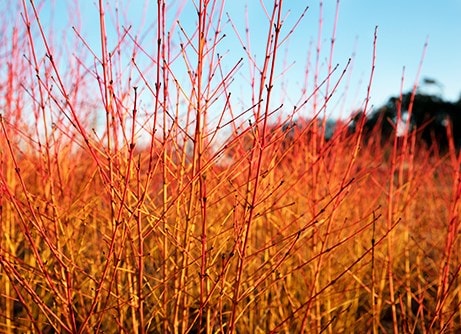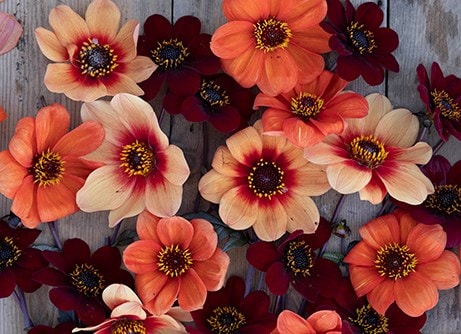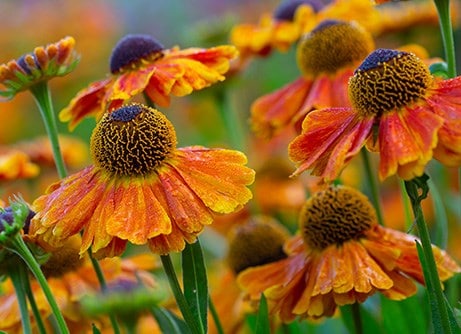A clump-forming herbaceous perennial showcasing narrow, mid-green leaves, and from late summer to mid-autumn, rich violet-purple flowers with distinctive yellow to dark orange centres, attractive to bees and butterflies.
Known for its fully hardy nature, this Michaelmas daisy cultivar adds vibrant colour to the autumn garden and large pots. Its 3cm (1.5in) flowers develop a charmingly shaggy appearance as they age, and the cut or dried blooms make a striking addition to floral arrangements.
Named after the custodian of the national collection in Worcestershire, Symphyotrichum novae-angliae 'Helen Picton' is celebrated for its exceptional deep purple hue.
How to care for Symphyotrichum novae-angliae Helen Picton:
Choose a sunny location to get the best flowering display—this type of aster performs best with at least 6 hours of direct sunlight per day.
Plant in moist but well-drained, loamy soil that has been improved with organic matter such as compost or well-rotted manure. While it tolerates a wider range of soils, avoid prolonged waterlogging.
Allow 45-60cm (18-24in) spacing between plants to support strong air circulation. Although Symphyotrichum novae-angliae is more mildew-resistant than S. novi-belgii, spacing still helps maintain healthy growth and shape.
Staking may be necessary for taller cultivars, particularly in exposed spots. Use twiggy prunings or slim supports early in the season before the stems get tall.
Pinch back stems when they reach about 15-20cm (6-8in) to encourage denser, bushier plants. This isn’t essential but helps control height and increase flowering. Removing spent flowers can prolong blooming.
These asters naturally hold their flower heads well and don't close at night, making them a reliable late-season pollinator plant.
Cut back old growth to ground level in late winter or early spring, once the worst of the frosts have passed. The spent stems provide winter interest and shelter for wildlife.
Apply a mulch of 5-7cm (2-3in) in spring to conserve moisture and keep weeds down. Avoid covering the crown directly.











